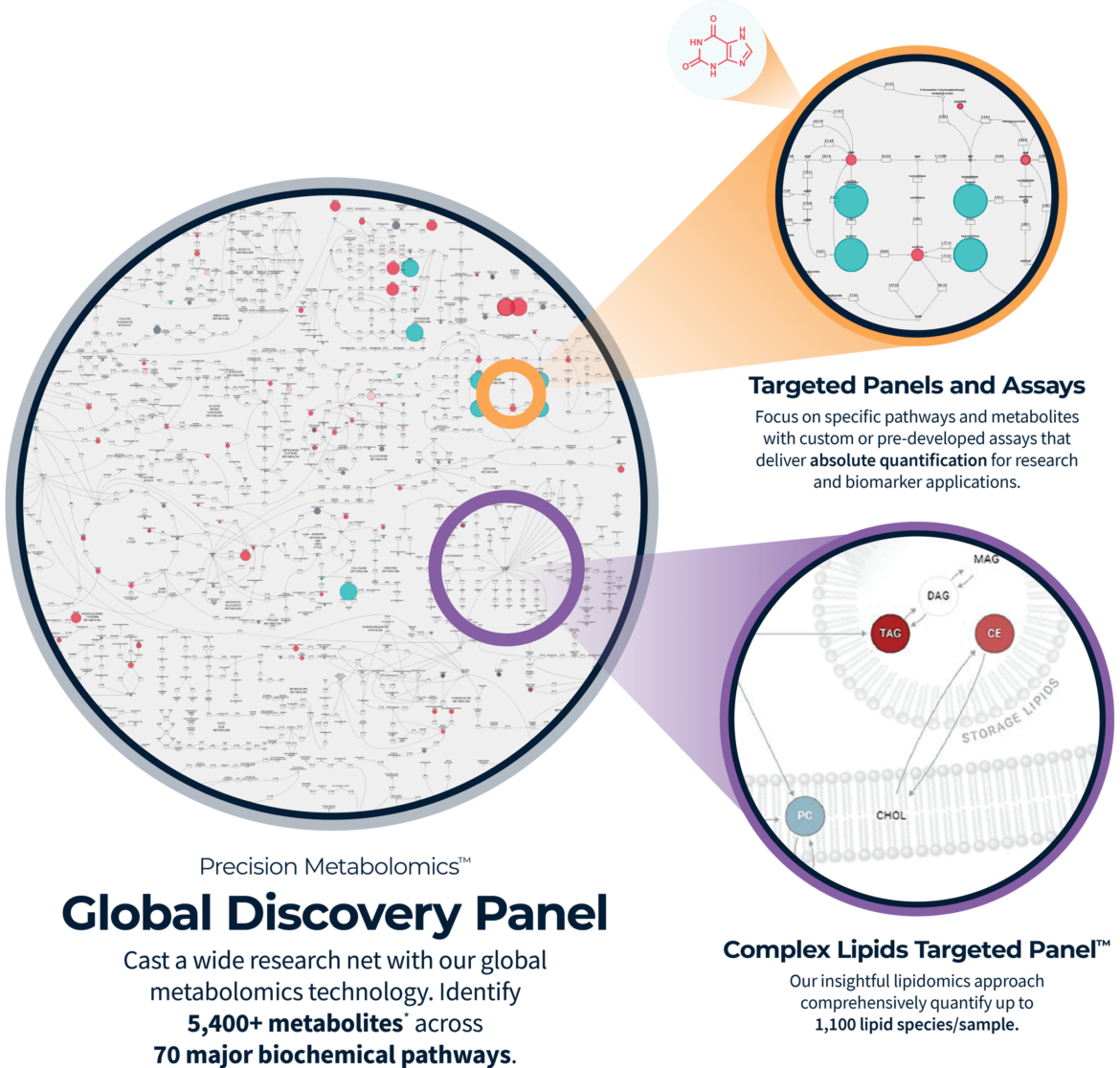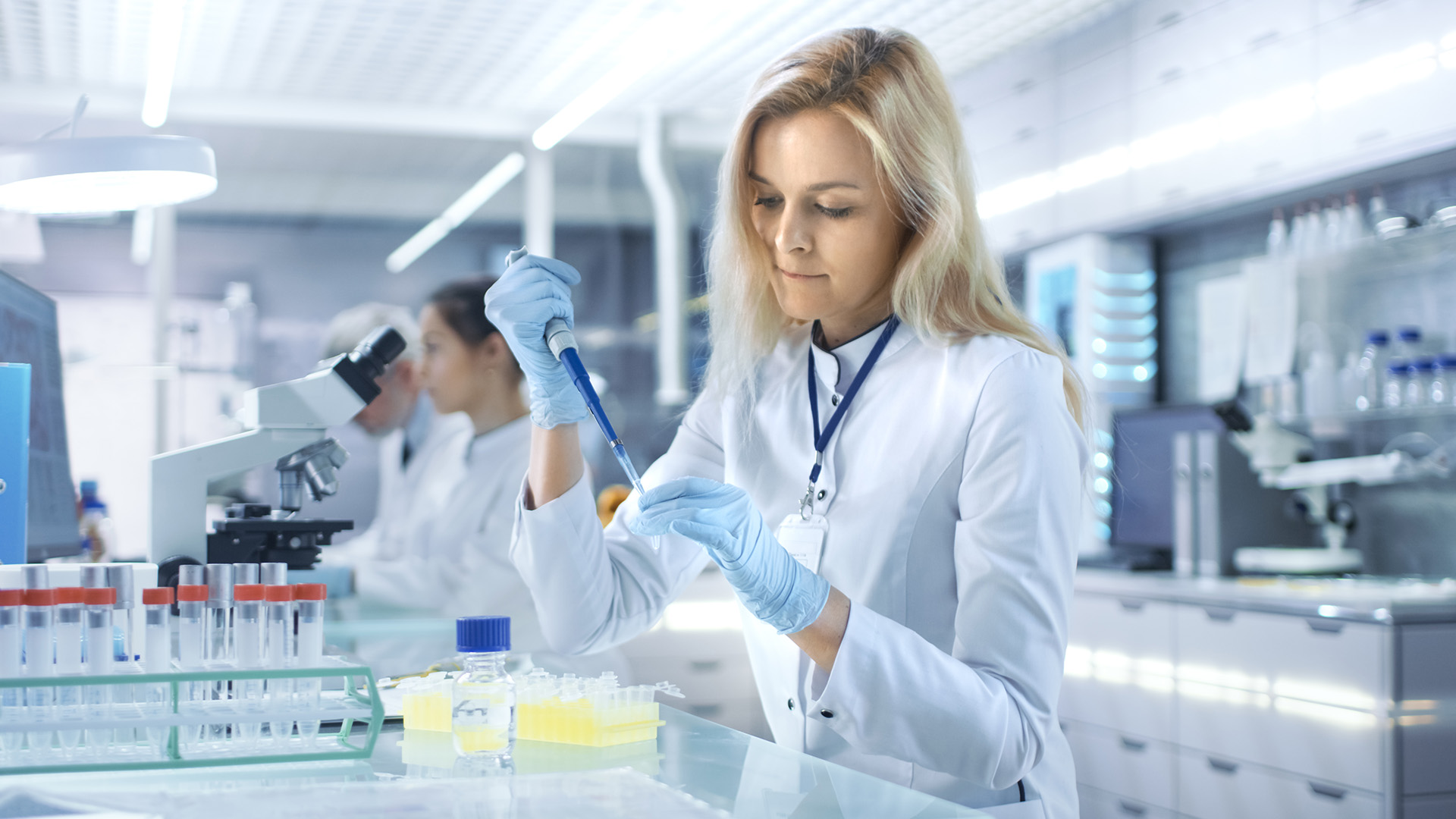Targeted vs Untargeted Metabolomics—An Overview
The understanding of human physiology and disease has seen tremendous advances with high-throughput technologies such as genomics and proteomics. In recent years, scientists have identified metabolites, low molecular weight molecules and the terminal downstream product of the genome, as a vital component of many biological processes.1 As a result, metabolomics has emerged as a tool to quantify metabolites present within organs, tissues, and cells to understand how fluctuations in metabolite concentrations might modulate physiology and disease. Since 1993, research utilizing metabolomics has drastically increased, with over 75,000 citations on Pubmed. These studies have identified novel biomarkers and systems biology level mechanisms for many diseases, from obesity and type-2 diabetes to various cancers and infectious diseases. Additionally, metabolomics has seen application in agricultural and food chemistry industries as a quantitative means to optimize yield and ensure food safety.
Metabolomic strategies are commonly categorized into two approaches: untargeted and targeted metabolomics.2 Untargeted metabolomics is a global and comprehensive analysis, encompassing the measurement of all metabolites in a sample, including unknown targets. In contrast, targeted metabolomics is the measurement of a defined set of characterized and biochemically annotated analytes. Both untargeted and targeted metabolomics offer their own advantages and disadvantages, with the strength of one technique often representing a weakness in the other.

What is the Difference Between Targeted and Untargeted Metabolomics?
As described, the primary distinction between targeted and untargeted metabolomics is their scope—targeted metabolomics requires a previously characterized set of metabolites for analysis, while untargeted metabolomics is the global measurement of all metabolites in a sample, both known and unknown. Importantly, the choice between these techniques necessitates careful consideration of the researcher’s goals.
The utilization of targeted metabolomics is hypothesis-driven and often applied for validation of previously identified processes. Taking advantage of a priori knowledge of metabolic pathways and mechanisms, targeted metabolomics allows for the measurement of ~20 metabolites, provides absolute targeted quantification of metabolites, and can be used to establish baseline measurements in healthy vs. impaired comparisons.
In contrast, untargeted metabolomics establishes foundations for discovery and hypothesis generation. Untargeted approaches involve qualitative identification and relative quantification of thousands of endogenous metabolites in biological samples. This methodology has played a pivotal role in biomarker discovery and in providing fresh insights into diseases and physiology.
Considering the conceptual disparities between targeted and untargeted metabolomics, these methods also have distinct procedural differences.3 Notably, sample preparation for targeted metabolomics requires extraction procedures for specific metabolites (requiring internal standards), while untargeted metabolomics requires global metabolite extraction procedures. Both methods often utilize nuclear magnetic resonance (NMR), gas chromatography-mass spectrometry (GC-MS), or liquid chromatography-mass spectrometry (LC-MS) for data acquisition; however, due to the large data sets and unknown metabolites involved in untargeted metabolomics, there are several additional data processing steps compared to targeted metabolomics. Both methods apply several data analysis methods for interpretation including bioinformatics, enrichment analysis, pathway analysis, and generation of metabolic networks.
What are the Advantages of Targeted Metabolomics?
The advantages of targeted metabolomics stem from its focus on identifying and characterizing known metabolites. Targeted methods leverage an extensive understanding of metabolic processes, enzyme kinetics, and established molecular pathways to attain a clear comprehension of physiological mechanisms. Advantages of targeted metabolomics include:2,4
- The use of isotopically labeled standards and clearly defined parameters reduces false positives and the likelihood of analytical artifacts.
- Metabolites analyzed with absolute quantification provide better overall precision compared to untargeted metabolomics.
- Optimized sample preparation reduces the dominance of high-abundance molecules.
- Predefined lists of metabolites under the lens of changing physiological states provide quantifiable comparisons between control vs. experimental groups.
What are the Disadvantages of Targeted Metabolomics?
In contrast, the honed-in focus of targeted assays also comes with disadvantages. Targeted approaches rely on a priori knowledge of specific metabolite sets, and their applicability becomes restricted in scenarios where a comprehensive understanding of a metabolite is lacking or when validated isotopic standards are not commercially available. Other disadvantages include:5
- A limited number of metabolites, typically around 20 in most protocols.
- Increased risk of missing metabolites of interest.
Considering the advantages and disadvantages of targeted analysis, it is critical to acknowledge that targeted metabolomics is designed to measure known metabolites. Researchers should thoroughly assess whether targeted approaches align with their research inquiries before implementation.
What are the Advantages of Untargeted Metabolomics?
The advantages of untargeted metabolomics primarily complement the limitations of targeted metabolomics. Given that untargeted approaches are primarily geared towards discovery and hypothesis generation, they don’t necessitate an exhaustive prior understanding of identified metabolites. Consequently, thousands of metabolites present can be measured within a single sample, facilitating comprehensive analyses for metabolite identification and metabolic profiling. Advantages of untargeted metabolomics include:
- Flexible biological sample preparation, ranging from simple to complex procedures.
- The capability to systematically measure a large number of metabolites, enables an unbiased approach.
- The generation of extensive, quantitative data through the comprehensive coverage offered by untargeted metabolomics.
- Does not require internal standards.
- The potential for unraveling both known and unknown metabolites, leads to the discovery of previously unidentified or unexpected changes.
What are the Disadvantages of Untargeted Metabolomics?
Although the untargeted metabolomics methods have provided significant insights for uncovering novel processes, many of benefits are accompanied by several limitations.6 Notably, the large data generated requires extensive processing and complex statistical analyses, and the presence of unknown metabolites introduces new challenges. Other disadvantages include:7
- The absence of reference standards makes the identification of unknown metabolites challenging.
- Unpredictable or uninformative fragmentation patterns.
- Difficulty in interpreting false discovery rates.
- Untargeted analysis suffers from decreased precision due to relative quantification.
- Additional time and resources are required for conducting statistical analysis and selecting the appropriate analytical method.
- A bias in detection towards higher abundance metabolites.
As with targeted metabolomics, researchers should exercise caution and thoroughly assess their research questions before opting for untargeted metabolomics. Undoubtedly, untargeted metabolomics excels in discovery and hypothesis generation, and recent advancements in the field have paved the way for integrating both targeted and untargeted approaches.
Recent Advances in Targeted and Untargeted Metabolomics
By leveraging the advantages and disadvantages of metabolomics analyses, researchers have begun to develop strategies and combine multiple analytical approaches to mitigate the pitfalls of both techniques.8 For example, one study examining the metabolome involved in the pathogenesis of hyperuricemia utilized untargeted metabolomics to screen novel candidate biomarkers. Targeted metabolomics was then used to verify the identified biomarkers.9 The combination of these methods has allowed for novel insights into the pathogenesis of many other diseases, including cardiovascular disease, neurodegenerative disease, diabetes, and cancer.8
Scientists have also used “semi-targeted” analyses, involving a larger defined list of targets (e.g., 100s of metabolites) but often without hypotheses. This approach has also provided considerable insight into physiology and disease. For instance, semi-targeted metabolomics played a pivotal role in pinpointing essential metabolites linked to an elevated future risk of pancreatic cancer.10 Others have integrated metabolomics with genome-wide association studies (GWAS) to establish genetic associations with fluctuating metabolite levels to further understand causal mechanisms underlying physiology and disease.10
References
- Goodacre, R, Vaidyanathan, S, Dunn, WB, et al. Metabolomics by numbers: acquiring and understanding global metabolite data. Trends Biotechnol 2004;(22):245-252.
- Roberts, LD, Souza, AL, Gerszten, RE, et al. Targeted metabolomics. Curr Protoc Mol Biol 2012;(Chapter 30):Unit 30 32 31-24.
- Liu, X, and Locasale, JW. Metabolomics: A Primer. Trends Biochem Sci 2017;(42):274-284.
- Ribbenstedt, A, Ziarrusta, H, and Benskin, JP. Development, characterization and comparisons of targeted and non-targeted metabolomics methods. PLoS One 2018;(13):e0207082.
- Vinayavekhin, N, and Saghatelian, A. Untargeted metabolomics. Curr Protoc Mol Biol 2010;(Chapter 30):Unit 30 31 31-24.
- Gertsman, I, and Barshop, BA. Promises and pitfalls of untargeted metabolomics. J Inherit Metab Dis 2018;(41):355-366.
- Schrimpe-Rutledge, AC, Codreanu, SG, Sherrod, SD, et al. Untargeted Metabolomics Strategies-Challenges and Emerging Directions. J Am Soc Mass Spectrom 2016;(27):1897-1905.
- Chen, L, Zhong, F, and Zhu, J. Bridging Targeted and Untargeted Mass Spectrometry-Based Metabolomics via Hybrid Approaches. Metabolites 2020;(10).
- Qin, N, Qin, M, Shi, W, et al. Investigation of pathogenesis of hyperuricemia based on untargeted and targeted metabolomics. Sci Rep 2022;(12):13980.
- Mayers, JR, Wu, C, Clish, CB, et al. Elevation of circulating branched-chain amino acids is an early event in human pancreatic adenocarcinoma development. Nat Med 2014;(20):1193-1198.




